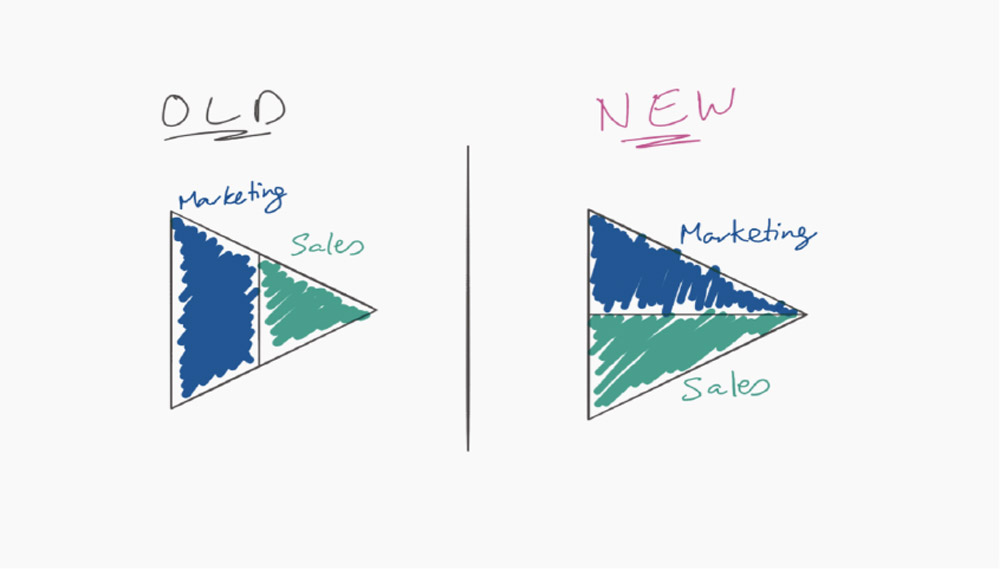Advertisement

Sage Intacct offers the only IFRS 15 cloud accounting and billing solution – from quote to financial forecast.
Growing revenue with marketing is something every founder will tell you they want, but few actually accomplish. Shiv Narayanan is on a mission to change this with his company How to SaaS. Speaking with SAAS NORTH, Shiv shared his framework for how he helps companies scale revenues with marketing.
Key takeaways:
- Marketing strategy will look different depending on your business structure.
- All marketing should be built with the lens of how your ideal customers learn.
- When crafting a marketing plan, think in terms of programs supported by individual pieces of content.
- Create content for purchase-ready prospects first, then work backward to build awareness.
Advertisement

As organizations transform digitally, the potential impact of the contact centre has been brought to the forefront of CX strategy goals. Cloud-based contact centres are game-changers when strategically aligned to your CX initiatives and goals across the enterprise.
Sales teams are a powerful revenue driver in software, but they aren’t the only option. Shiv Narayanan learned this lesson when he scaled Wild Apricot’s revenue by millions without a sales team. Now he runs How to SaaS, a consultancy that helps SaaS companies create value and grow revenues by leveraging marketing. Speaking with SAAS NORTH, Shiv explained the steps SaaS founders should follow when they want to build revenues with marketing efforts versus sales hires.
1 – SEGMENT YOURSELF
Before diving into strategy or tactics, it’s important to think about what kind of business you’re in and what that says about your marketing needs.
Bootstrapped: Cash flow and profitability are usually the most important outcomes, meaning that return on ad spend (ROAS), campaign return on investment (ROI), and similar metrics will matter a lot.
VC-backed company: Growth and growth rate are typically the most important outcomes, meaning things like channel scalability and ROAS are critical.
PE-backed company: Earnings before interest, taxes, depreciation, and amortization (EBITDA) is often a critical outcome, suggesting that customer acquisition cost (CAC) payback and other cash flow planning will be a focus.
You also need to take into account business-specific context such as:
- Average deal size.
- Average customer retention rate.
- Total addressable market (TAM).
- Ideal customer profile (ICP).
“It’s about building an overall strategy for marketing that’s aligned with business objectives,” said Shiv.
Advertisement

Tequity leads in achieving premium outcomes for Enterprise B2B SaaS companies in strategic merger and acquisition transactions.
2 – PLAN FOR HOW YOUR BUYERS LEARN
Most software companies, said Shiv, are sales-led. This can drive revenue, but sales is often incorrectly prioritized over marketing, which leads to a weaker revenue organization overall.
“When startups have marketing it’s often traditional top of the funnel activities like events, PR, communication, and brand work,” said Shiv. “This is important, but marketing is often not looked at as a revenue driver. However, it should be.”

This mentality of marketing driving awareness but sales driving revenue may have worked pre-internet, but people learn differently now.
Buyers want to self-educate: With a plethora of information online, people want to read up on things by themselves to learn about the space, possible options, and your solution in particular.
Buyers want content at every stage: Previous marketing used to focus on getting people in the metaphorical door and having sales reps close the deal. Now, buyers want content to assist them in every stage, even when they’ve started talking to sales.
Some buyers don’t ever want to talk to a person: Many buyers want to try something on their own without being forced into a sales conversation. If your software is enterprise or more custom, one solution is to have content people can opt into and be nurtured until they are ready to book a call.
“Your average buyer will consume multiple pieces of content before reaching out to sales, if they even reach out at all before buying or signing up for a trial,” said Shiv. “If you aren’t providing content for them to consume, they’ll likely get it from a competitor.”

3 – THINK IN TERMS OF PROGRAMS
When you’re ready to make content, it’s tempting to just start creating. However, this can lead to a wild misuse of time and funds. Instead, Shiv recommends thinking in terms of programs with specific outcomes and content to facilitate the program. Examples include:
Demand generation: Programs designed to get new people aware of, and interested in, your space and your solution.Content to support these programs might include: a webinar, ebook, or whitepaper.
Lead nurture: Ongoing content designed to keep people engaged with you who want to receive information but aren’t ready to act yet. For instance: a newsletter, blog, or vlog.
Sales enablement: Specific content designed to overcome purchase obstacles and customer concerns in the final stage of buying. For instance: case studies, customer stories, or use-case how-to documentation.
To create a holistic customer journey, you need to identify the core programs that will support a buyer at every stage. This is also where technology considerations come in, as you will likely need a customer journey or content marketing software to help you automate and scale up your programs.
“As you design a program, you have to think about the whole journey, content repurposing, and making it accessible for anyone to join at the moment that works for them,” said Shiv.
4 – LET FRAMEWORKS GUIDE MARKETING ASSET CREATION
Armed with an understanding of your goals and programs to entice potential buyers, the final step is to create your content. Shiv recommends following a framework that’s based on how far someone is from purchasing your product.
The framework Shiv explained has four journey steps to it:
Someone who is completely unaware of your business or software: Content focused on the space in general and why it’s important or necessary.
Someone who has some awareness: Content focused on use cases or specific goals someone might have that make your solution relevant.
Someone looking for information on solutions like yours: Content focused on how to assess readiness for purchase and identify which solution in the market is right for your needs.
Someone getting ready to buy a solution like yours: Content to show what your solution offers to customers and validate that you deliver what you promise via customer stories or use-case explaining.
When it comes to marketing asset production, particularly for resource-limited startups, Shiv recommends beginning at the end – consideration and buying – and working backwards to people who are completely unaware.
“If you start with consideration, you’ll get some quicker wins that you can use to lobby for additional budget,” said Shiv. “Then you can continue to grow your sphere of influence.”
Advertisement

DON’T GET STUCK IN WEEDS OF YOUR OWN GROWING
Marketing is a huge game. High quality marketing assets can be expensive to produce and distribute, so startups need to make sure they approach it properly. One thing Shiv said often isn’t necessary in the early stages, though, is an extensive market segmentation analysis.
For any company just starting out with using marketing as a revenue driver, Shiv recommends focusing on getting a good-enough idea of targeted accounts, then making a plan of action for how buyers learn and the programs necessary to reach them.
“You can start with one marketer, or even just the founder, if you need to,” said Shiv. “At the end of the day, this entire thing is just identifying the places you invest in order to drive pipeline. That’s it.”
